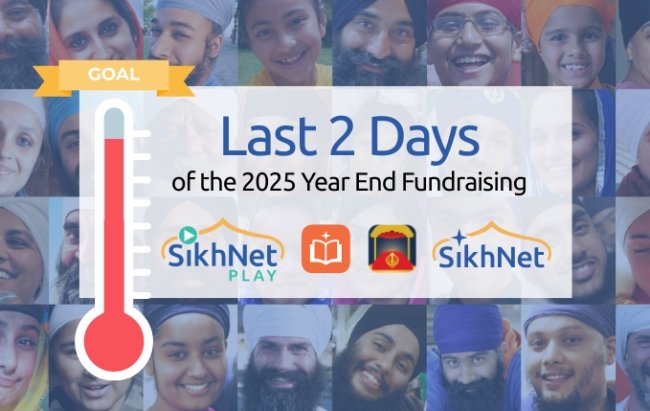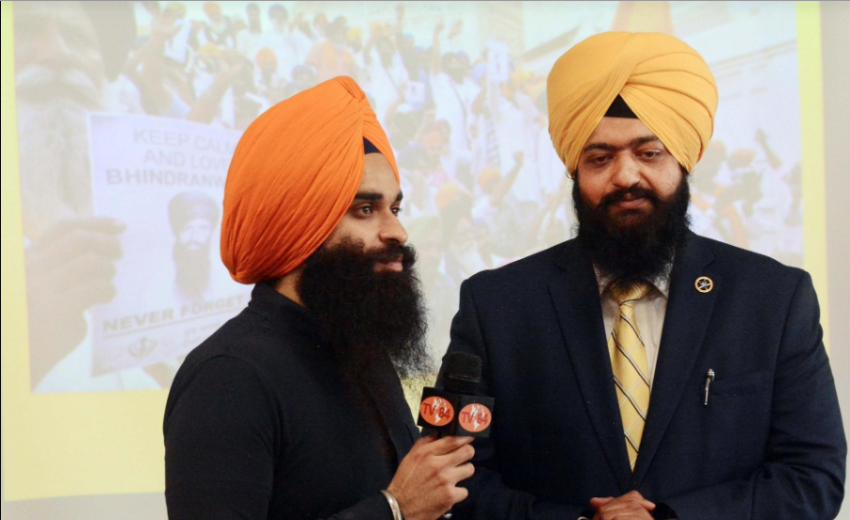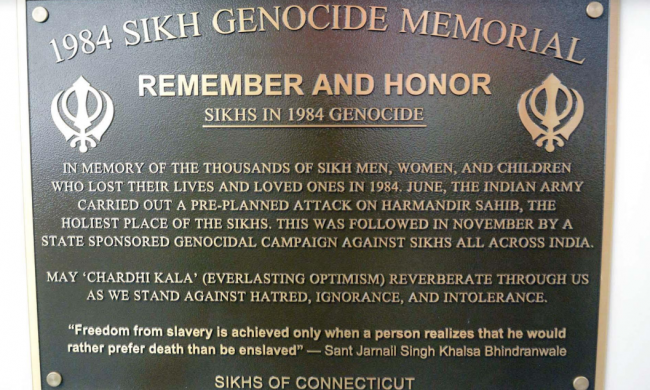NORWICH – Representatives of the local and wider Sikh community gathered inside Norwich’s Otis Library on Saturday to formally commemorate the deaths of thousands of its members 35 years ago throughout India.
The event, attended by several elected city officials and community leaders, included the unveiling of the first United States “1984 Sikh Genocide Memorial” plaque to remind viewers of the June 1984 attack in Punjab, as well as the subsequent genocide of Sikh adherents months later.
The memorial, placed on a wall of the main lobby near a sketch of the city of Norwich, features a plaque honoring Sikh soldiers who fought to protect places of worship with a portrait of Sant Jarnail Singh Khalsa Bhindrawale, who died during fighting at the Darbar Sahib, or Golden Temple, in Amritsar, Punjab.
“Why have this function?” asked Manmohan Singh Bharara, one of several speakers at Saturday’s event. “Because the best way to remember is by seeing, doing and discussing. We cannot allow the past to be laid to rest. We have to talk about it. We’re here so this thing never gets repeated again.”
In June 1984, after the Indian government suspected weapons were being stockpiled at the temple, troops were deployed into the religious complex. Hundreds of Sikh worshippers were killed and the structure was desecrated and burned.
This month marks the 35th anniversary of the temple fight, which later led to the assassination of Prime Minister Indira Gandhi by her Sikh bodyguards. Her death sparked the “November 1984 Sikh Genocide,” in which thousands of Sikhs were killed in reprisal across India.
Jagdeep Singh, of the Sikhs for Justice group, said Saturday’s ceremony was an opportunity to change decades worth of false narratives on the temple and later killings.
“Initially, the version was always portraying the Sikhs as terrorists, but this was a case of an armed conflict between two groups, a civil rights movement,” he said. “The genocide was always referred to as ‘riots,’ not a situation where thousands were killed and many more went missing.”
Singh said the situation for Sikhs in India is still tenuous, with the religion still not recognized by the government to any extent.
“Even right now, right here today, if you try and send a picture, a tweet or any other social media message regarding this anniversary to India, it’s blocked,” he said.
The Sikh faith, more than five centuries old and the fifth largest religion in the world, was founded in Northern India by Guru Nanak Dev Ji. Sikhs, which translates to disciples or learners, adhere to three basic principles: Meditating on the name of God, earning a living by honest means and sharing the fruits of one’s labor with others.
Recognition of the genocide has been noted well beyond Norwich’s borders with Gov. Ned Lamont declaring June “Sikh Memorial Month” and the General Assembly passing a resolution to declare Saturday “Sikh Memorial Day.”
According to the Sikh Coalition, about 500,000 Sikhs live in the U.S., with much of that population settled in California and New York.
Swaranjit Singh Khalsa, the city’s Sikh community leader and a local businessman, spent years working to get the Sikh memorial plaque in place. He said his religion, while frequently misunderstood, espouses concepts that any American would find familiar.
“It’s not too different from the U.S. Constitution with its emphasis on equal rights, equality and freedom of religion,” he said. “I’ve waited for this day my whole life. This place, here in the city and in the state, have been accepting of who I am and where I’m from. I have no words for that.”


